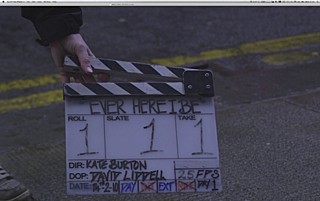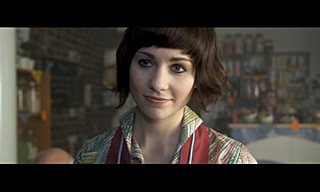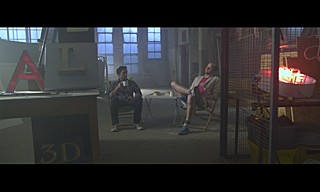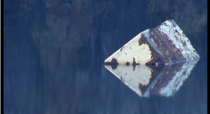When I heard that the RED camera was coming to town, I was keen to work with it. Digital cinema had arrived, and by digital cinema I mean rushes that are just computer files; and yet they look amazing on the big screen. No toxic rolls of film, no whirring reels of tape. The result could be projected in Cineworld or GFT1 (5 mins from my Glasgow suite), and it would look like 35mm. I had already seen Stephen Soderbergh’s Che (entirely shot on RED) in GFT2 and it looked very nice to me.
I’m not one of those people who reveres celluloid film as the apotheosis of cinema. To me, film is an unwieldily middleman putting technology in the way of expression. It’s nice in your hands and even nicer when you hold it up to the light, but films are meant to carry stories: not be objects of fetish in themselves. I shot my first films on Super 8 and then on 16mm. Super 8 seemed better because it corrupted what it saw in unusual ways. 16mm just looked like soft 35mm. 35mm needed the big money. We put up with film because it was poetry when compared to video. But digital cinema is not video: it’s something else.
Surely future generations will feel deprived of this celluloid poetry…?
I recently asked a class of secondary school children (12-17 year olds in a school film unit) if any of them had ever taken a roll of snap shots to be developed and printed. Not one of them had. Not one of them cared. Digital stills have taken over, and we’re all very relaxed about it. Goodbye XP4 and HP5, or my favourites: Scotch Chrome 1000 and Ektachrome 100. We don’t need you anymore; what an awful lot of money you cost us.
For some reason there’s a resistance to the death of celluloid when it comes to movies. Which is strange considering that lab costs have been the single biggest hurdle to getting a film made for as long as I can remember. Now that hurdle has gone. No more begging for ‘short-ends’, no more mind-boggling ‘edge-numbers’, no more agonising over telecine costs. I expect that by April 2013, we won’t be able to purchase or develop a roll of 16mm or 35mm film anywhere in the UK.
Film is dead. Long live Film.
For low budget film-makers, all our attention can now be given over to the stuff that really matters:
the script, the cast, the light, the lens.
Yes, the lens: because what you are shooting through is far more important than what you are shooting on. But that’s what everyone asks when you say you’re making a film: “Oh cool, what are you shooting on?” Not, “What is it about? Who is it about?” Or, if you are going to be technical, “Are you getting prime lenses?”
Why? Because everyone wants to know how close you are getting to 35mm. With tapeless systems like RED, that boring question is properly answered. And of course it comes with a box full of lovely lenses. So all that’s left now is one interesting question:
“What’s the story”
And one very boring one:
“Can anyone’s computer cope with such massive movie files?”
Yes, the Red camera produces a huge ‘negative’. It’s worth noting that at actual size, the RED camera’s rushes won’t even fit within my 30″ Apple Cinema Display. These are huge files.

Both the Interesting and Boring questions would be addressed with my most recent editing assignment: Ever Here I Be by Kate Burton, produced by Philippa Farnese for DigiCult.
The Interesting Answer
Ever Here I Be is a story about a beautiful young woman who is a terrible waitress, but an admirable spirit in a world of disappointments. One of these disappointments is a relationship she hopes to rekindle. To do so, she’ll have to convince her gloomy minded ex. After all, what is love without optimism?
Over 15 minutes we meet a number of unusual characters in an unusually bright and colourful Glasgow. Yes, it’s a bright film that’s set in Glasgow. Not everyone smiles, but not everyone feels hopeless either. They do what real people do: try to be happy despite their circumstances and self-doubts. Moreover, this film is funny and serious at the same time: even in the same shot. Like life, it’s rather rich.

Writer/director Kate Burton had visited some of these themes before in her previous film The Ice Plant, for which she had also created a hyper-real environment; but this new film would take these interests to another level: bigger cast, more locations, more evolved design ideas and only 5 pages longer. I say ‘only’, because, as any poet knows, it’s hard to do a lot with a little. The Ice Plant had 2 characters over 10 pages; Ever Here I Be has 7 characters over 15 pages. Rich indeed. It would also be a big demand on its production team (PM – Su Bainbridge, PC - Rachel Fiddes, 1st AD – Deva Smith, Designer - Natalie Astridge, Costume – Lucy Harvey, MUA – Nicole Stafford, Sound – Chris Campion).
Ever Here I Be also has a wider colour palette and a wider aspect ratio: 2.35:1 – very cinematic, very landscapey: the stuff of adventures, fables, myths and Westerns.
And it would be shot by David Liddell – esteemed graduate of both the Royal Scottish Academy of Music and Drama and the National Film and Television School with his own team of RSAMD and NFTS trained camera and lighting professionals. Not bad at all.
But would it all work on my Mac…?
The Boring Answer
The no 1 piece of advice for rushes from the RED camera is to transcode: that it is to turn them into another type of video; Uncompressed, Apple ProRes or even DV – something normal, smaller, less scary. It’s the same as the old offline/online workflow of last century, in which Avid Media Composer would suck the life out pictures from a DigiBeta deck until up to 95% of its data had been thrown away leaving a very porridgy looking result. Editors would shy away from wide-shots because the detail was so hard to read in the offline. At the end of the process, all the tapes would have to be taken out their boxes and stuck into clunky machines all over again to recapture the footage at full-fat quality.
Transcoding is the same idea without the porridgy pics: ProRes is actually a very high-quality image – calling it ‘offline’ seems a little rude – so I shouldn’t really complain. But I will. Because this transcoding process takes time. In fact, for every hour of rushes, you need 3 hours of transcoding.
3 hours?! This to me seemed very old school. I thought the point of tapeless was no waiting? Just drag-and-drop-instant-cinema? Transcode? That’s a bit like a ‘one light rush print’ back at the film lab, isn’t it? I don’t want to make time for that.
And what’s more, I had a director who wanted to review her rushes only an hour after I came out of mentoring editing students at the RSAMD. There was no time to be transcoding. Would it really be so bad if I just dragged a QuickTime from the location-temperature drive to the room-temperature Timeline and just pressed play?
So, I dragged, dropped, pressed play and it played.
RED uses wavelet derived proxies. This means that alongside the massive Redcode media file (the ‘negative’), are three wafer-light QuickTimes designed for use in editing software. These QuickTimes use the terribly clever mathematics of ‘wavelet transforms’ to sift only a manageable number of pixels from the ‘negative’. You can choose Full Frame, Half Frame, Medium or Proxy, and once again, you don’t have to wait. It’s all created on-the-fly once the DoP presses Rec and re-created when the editor presses play. It’s like using the online pictures, but with an instant offline translator holding back all the pixels you won’t need until you get to the cinema.
For the first slate of Ever Here I Be, the Redcode media file – the ‘negative’ – is 1.2GB of drive space – rather large – but the QuickTime I used for editing that shot is only 12KB: about the size of a longish email.

I’ll say now, you only need the Medium sized frame. It’s 1000 pixels wide and a quarter of the size of image intended for the cinema’s projector holding its own next to 35mm. But it was certainly big enough for my 30″ screen; and you have to put the Half size and Medium next to each other before you notice that the bigger of the two has blacker blacks.
When I told people I hadn’t transcoded, I was variously warned that I would have trouble exporting viewing copies. But despite longer than normal compression times, I was able to export DVDs and web-sized QuickTimes without a problem. All in all there were 17 uploads and 2 DVDs (yes, DVD is following VHS to the Clunky Format Graveyard, and I for one won’t miss it).
I should say that the RED documentation includes a hybrid workflow, which involves using the Log and Transfer window to create native, Redcode QuickTimes. These are self-contained 2k files. This takes some weight of the processor when you’re editing, but this is definitely not an instant process.
My workflow: drag-and-drop to Final Cut Pro on a high-spec Mac.
Finishing
The picture-locked cut also translated to the Baselight system at Serious Facilities (for grader, Ben Mullen) without a problem. That rich script has come out looking like a rather rich QuickTime. But how will look it projected? Get your tickets:
Edinburgh International Film Festival – 21st June 2010
Postscript
Ever Here I Be’s DoP, David Liddell has offered a thought or two on the subject of RED vs film, which goes beyond the easy pixel punch up between 4k and 35mm, and gets right to RED’s equivalent to the celluloid film plane at the back of the lens: the big and hilariously named ‘Mysterium’ sensor:
“Before, digital was only 3 x ⅔ inch sensors going through different prisms and filters each correlating to one of the primary colours: red, green or blue. So the smaller sensor produced images with too large a depth of field to be pleasing to the eye and an image area that – although a camera might have a high resolution – the sensor and lens really seemed unable to resolve those pixels in the most flattering way. Pixel count is no longer the primary goal.
“What cinematographer’s want is greater latitude ie more tonal range from black to white.”
Scouring the internet for further discussions will take you to reports on how many f–stops of exposure can be resolved using a given digital cinema camera or film stock, but a very important factor in image quality is the quality of the lighting, and that means the crew. Digital technology has turned us all into photographers, but your digital cinema rushes will never compete with the classics of celluloid without a first class DoP and team.















Comments